xhosa traditional dresses for ladies 2024
xhosa traditional dresses for ladies 2024
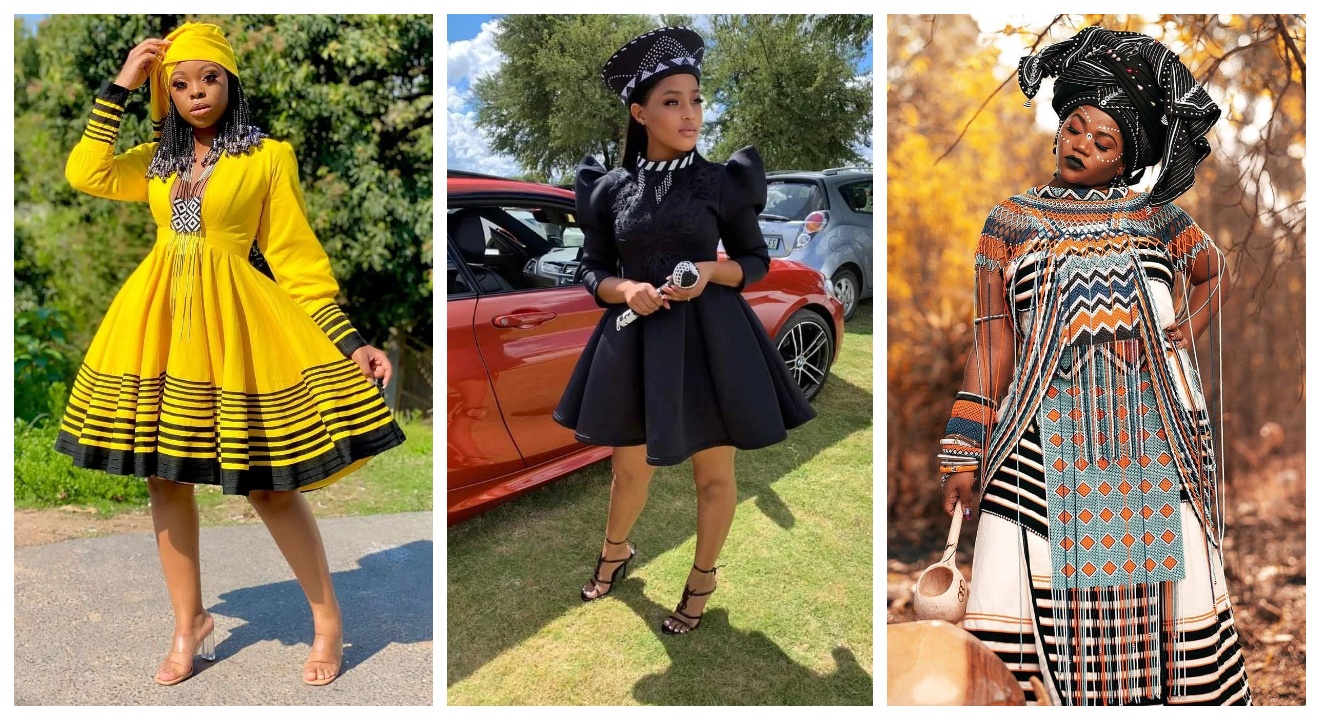
Introduction
Xhosa traditional dresses for ladies are a captivating expression of culture and heritage. As a person who appreciates the rich diversity of traditional attire, I have always been fascinated by the beauty and elegance of Xhosa dresses. These dresses are not only visually stunning but also carry deep cultural significance. In this blog post, I will explore the unique features and details of Xhosa traditional dresses, highlighting their importance in Xhosa culture.
The Beauty of Xhosa Traditional Dresses
Xhosa traditional dresses are known for their vibrant colors, intricate patterns, and meticulous craftsmanship. They showcase the artistic talent of Xhosa women and their appreciation for aesthetics. The dresses are typically made from a variety of fabrics, including vibrant shweshwe fabric and luxurious silk. The use of bold colors like red, blue, and yellow adds a striking visual appeal to the dresses. Additionally, the dresses are often adorned with beading and embroidery, further enhancing their beauty.
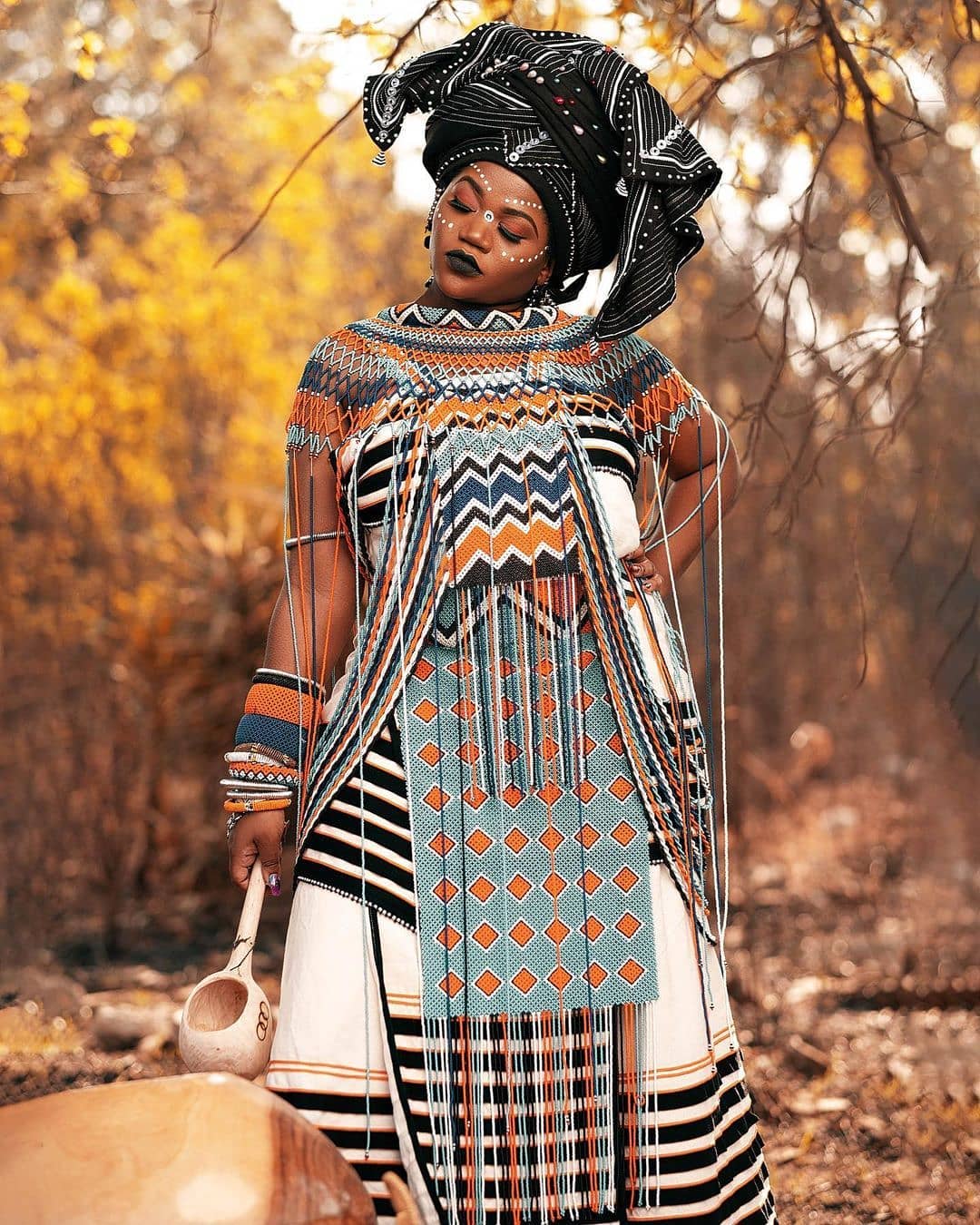
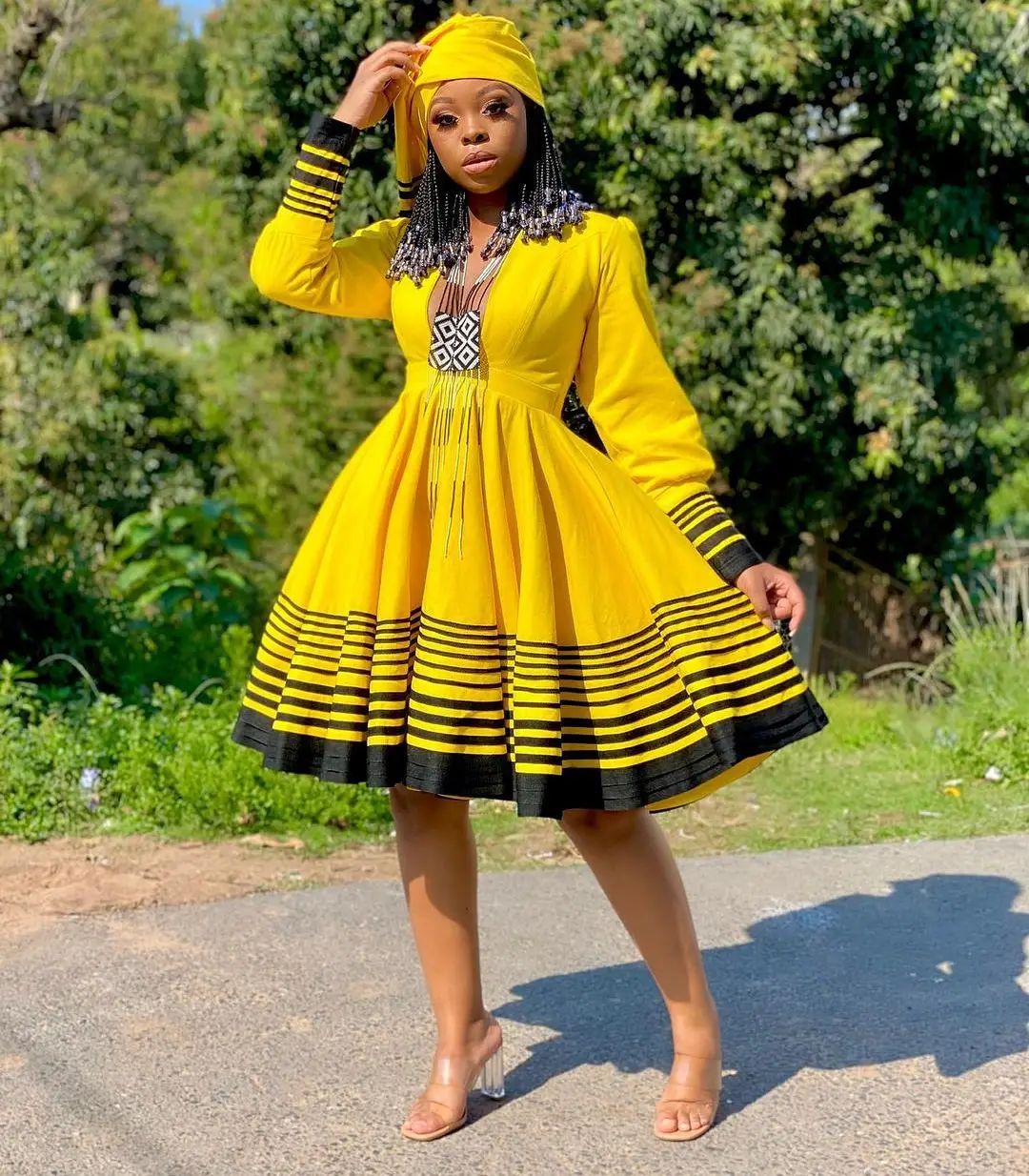
Significance of Traditional Attire in Xhosa Culture
In Xhosa culture, traditional attire holds immense importance as it represents a connection to the past and acts as a symbol of identity. Xhosa traditional dresses are worn during significant cultural and traditional ceremonies, such as weddings and initiation ceremonies. These dresses help preserve and promote cultural heritage, allowing Xhosa women to celebrate their roots and express their pride in their identity.
To further understand the features and details of Xhosa traditional dresses, let’s take a look at the following table:
| Feature | Details |
|---|---|
| Fabrics | Shweshwe fabric, silk, and more |
| Colors | Vibrant hues like red, blue, yellow, and more |
| Embellishments | Beading, embroidery, and intricate patterns |
| Occasions | Weddings, initiation ceremonies, and cultural events |
| Cultural Significance | Preservation of heritage and celebration of identity |
Xhosa traditional dresses for ladies are a remarkable display of craftsmanship, culture, and pride. Whether it’s the vibrant colors, intricate designs, or the significant cultural meaning, these dresses have a way of capturing the imagination and leaving a lasting impression. So, if you’re looking to embrace a piece of Xhosa culture and make a stylish statement, consider adding a Xhosa traditional dress to your wardrobe.
For more information on Xhosa culture and traditional dresses, you can visit the Xhosa people Wikipedia page.
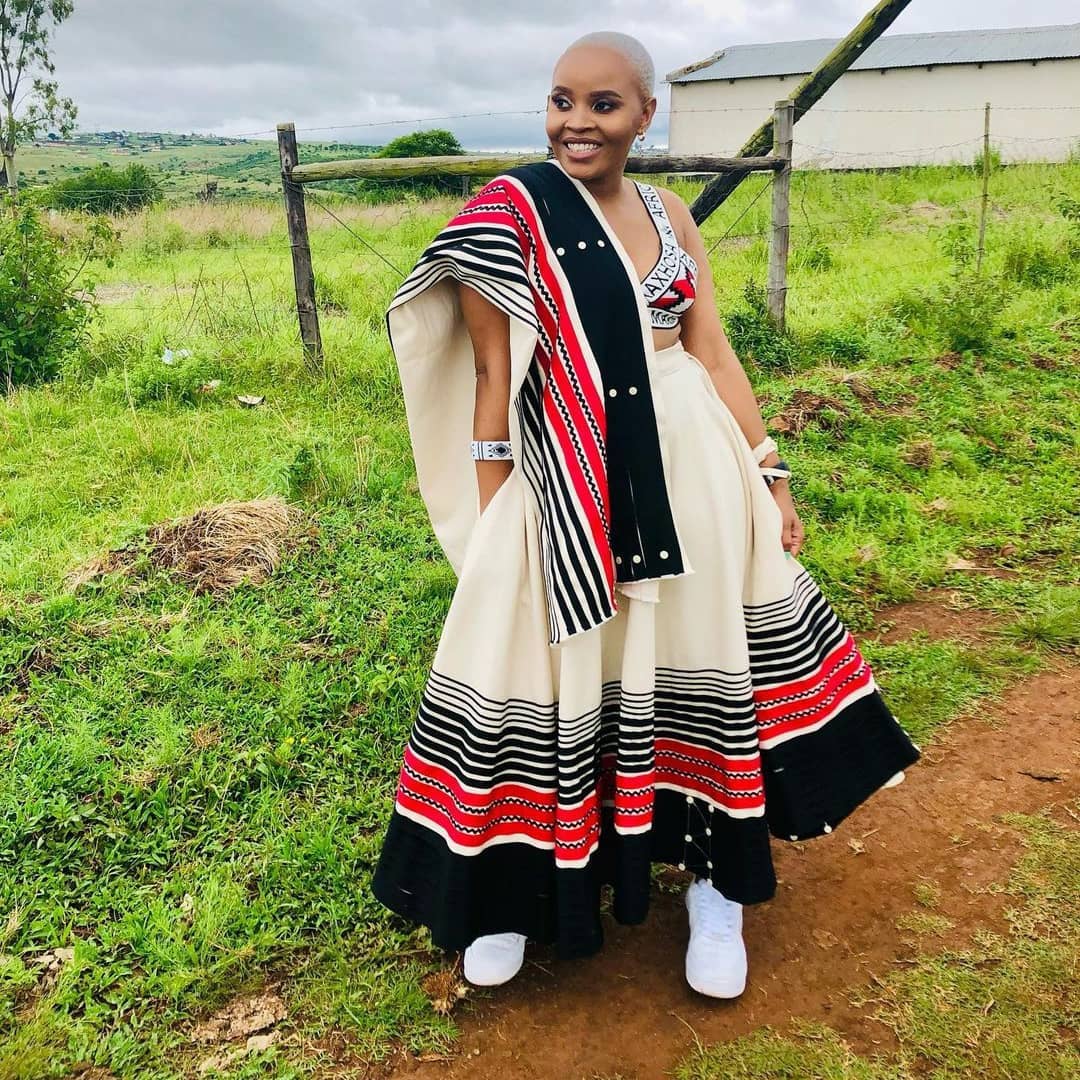
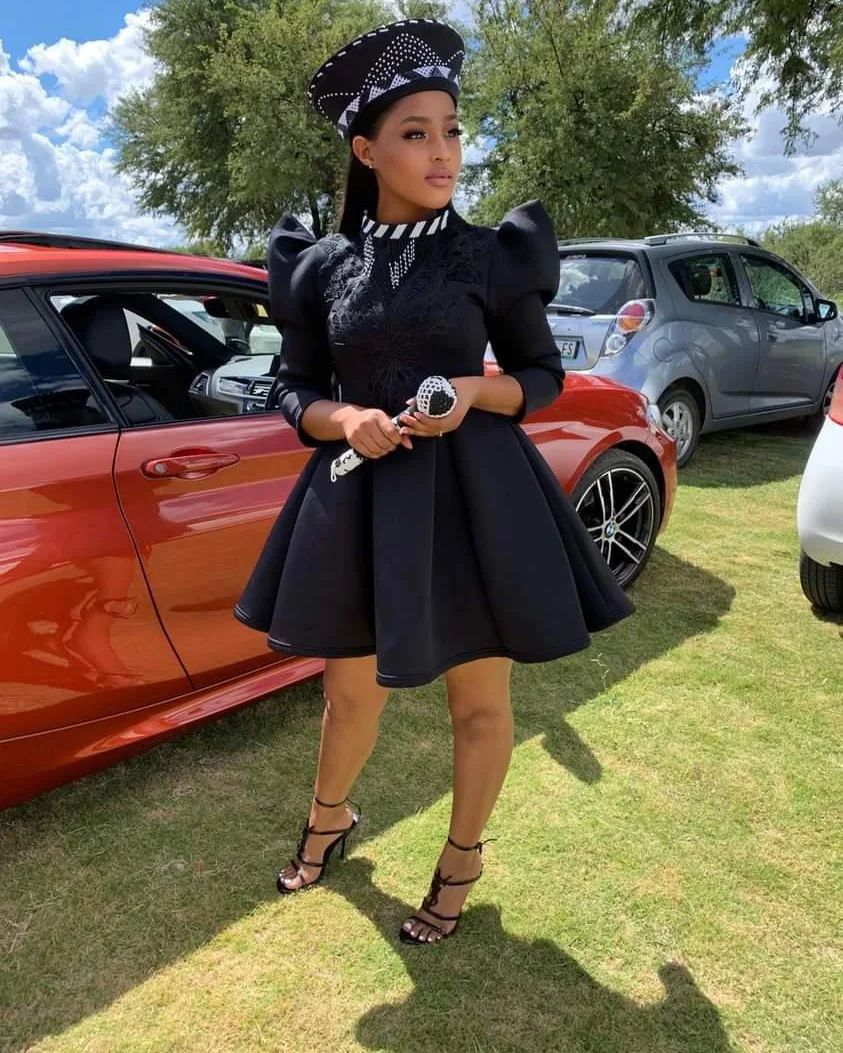
Styles of Xhosa Traditional Dresses
As a fashion enthusiast, I am always drawn to the beauty and elegance of traditional dresses. Today, I want to highlight the exquisite styles of Xhosa traditional dresses for ladies. The Xhosa people, who are predominantly found in the Eastern Cape province of South Africa, have a rich cultural heritage, reflected in their traditional attire.
Umntu Ntshunxeko
One of the most well-known Xhosa traditional dresses is the Umntu Ntshunxeko. This dress is characterized by its vibrant and colorful patterns, usually made from locally sourced fabrics. The skirt is pleated and flared, creating a stunning silhouette. The top is beautifully embroidered, adding intricate detail to the overall look.
Umbhaco
Another popular style is the Umbhaco dress, which is often worn during special occasions and ceremonies. This dress is made from imported fabrics and adorned with stunning beadwork. The most striking feature of the Umbhaco dress is the colorful aprons that are worn over the skirt, adding a bold and eye-catching element to the outfit.
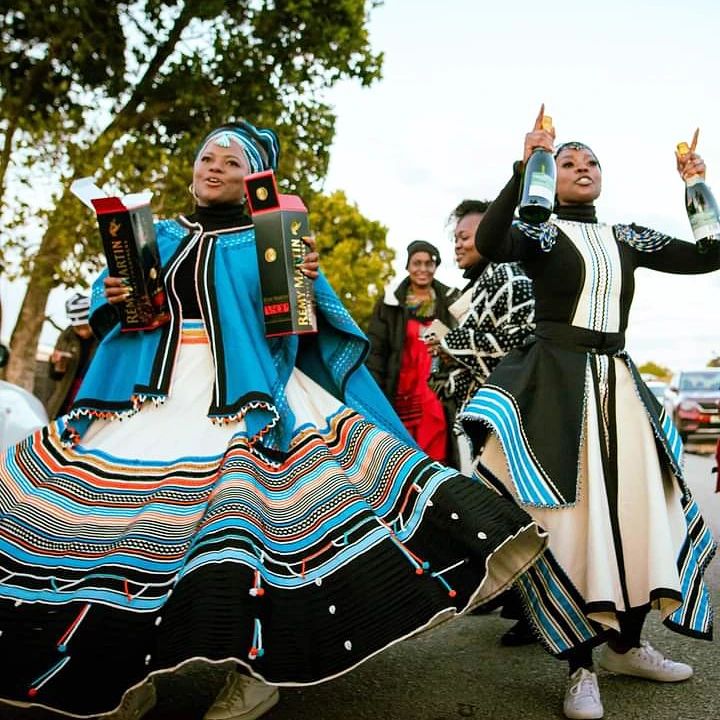
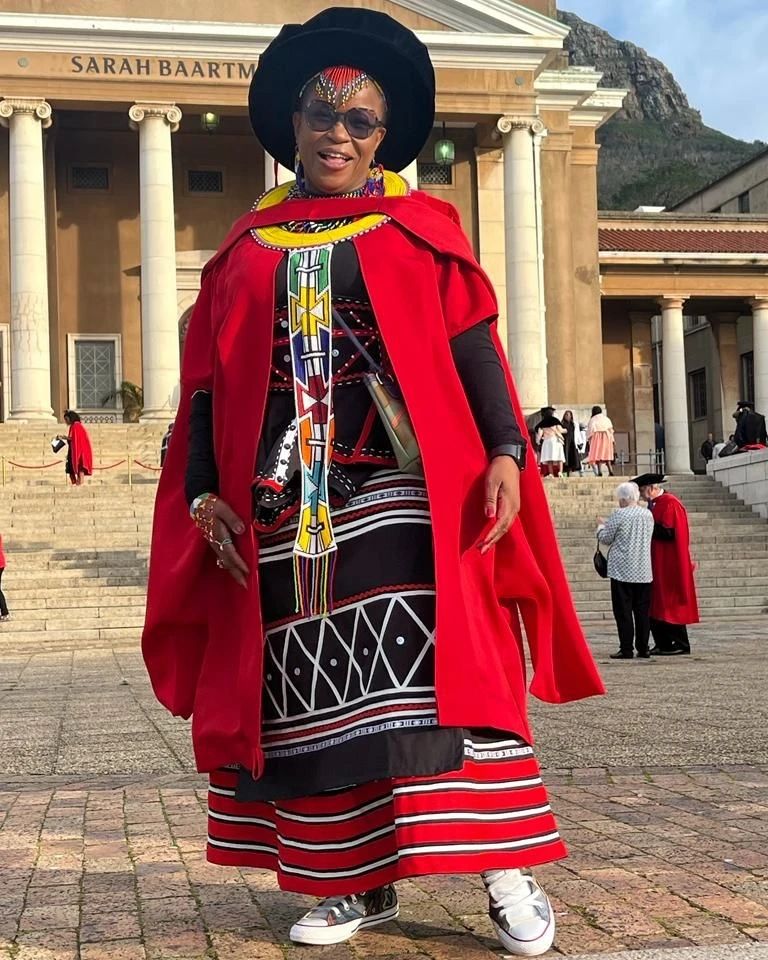
Isicholo
The Isicholo is a unique Xhosa traditional headpiece that beautifully complements the dresses mentioned above. It is worn by married Xhosa women and is made from knitted or woven materials, adorned with beads and feathers. The Isicholo adds height and elegance to the overall look and represents the cultural importance of married women in Xhosa society.
To help you compare these styles, here is a table outlining their key features:
| Dress Style | Umntu Ntshunxeko | Umbhaco | Isicholo |
|---|---|---|---|
| Fabric | Locally sourced, vibrant patterns | Imported fabrics, beadwork | Knitted or woven materials, beads, feathers |
| Skirt | Pleated and flared | Pleated | Not applicable |
| Top | Embroidered | Not applicable | Not applicable |
| Special occasions | Everyday wear | Special occasions | Special occasions |
Xhosa traditional dresses are a celebration of culture, artistry, and identity. They showcase the creativity and pride of the Xhosa people. Whether it’s the intricate embroidery, vibrant patterns, or breathtaking beadwork, these dresses are a true work of art. If you want to learn more about Xhosa culture and history, I encourage you to visit the Xhosa people page on Wikipedia.
Fabrics used in Xhosa Traditional Dresses
As a lover of African fashion, I can’t help but be captivated by the beauty and elegance of Xhosa traditional dresses for ladies. These dresses not only showcase the rich cultural heritage of the Xhosa people but also celebrate the craftsmanship and artistry of the designers. Two notable fabrics used in Xhosa traditional dresses are Shweshwe and Xhosa Beadwork. Let’s take a closer look at these fabrics and what makes them special:
Shweshwe
Shweshwe: is a printed cotton fabric that has become synonymous with Xhosa culture. Originally sourced from Europe, Shweshwe fabrics are now produced in South Africa. Its distinctive geometric patterns and vibrant colors make it a popular choice for Xhosa traditional dresses. Shweshwe fabrics are durable and comfortable, making them suitable for everyday wear or special occasions. The fabric is often used to create traditional dresses with intricate pleats, ruffles, and bold silhouettes.
Xhosa Beadwork
Xhosa Beadwork: is another integral part of Xhosa culture, often displayed in their traditional dresses. Beadwork is meticulously crafted using a variety of beads in different colors, sizes, and patterns. Each bead represents a specific meaning or symbol, communicating messages of love, wealth, and cultural identity. Xhosa women skillfully incorporate beadwork into their dresses, creating stunning designs that are unique and personal. The beadwork adds a touch of glamour and sophistication to the already beautiful traditional dresses.
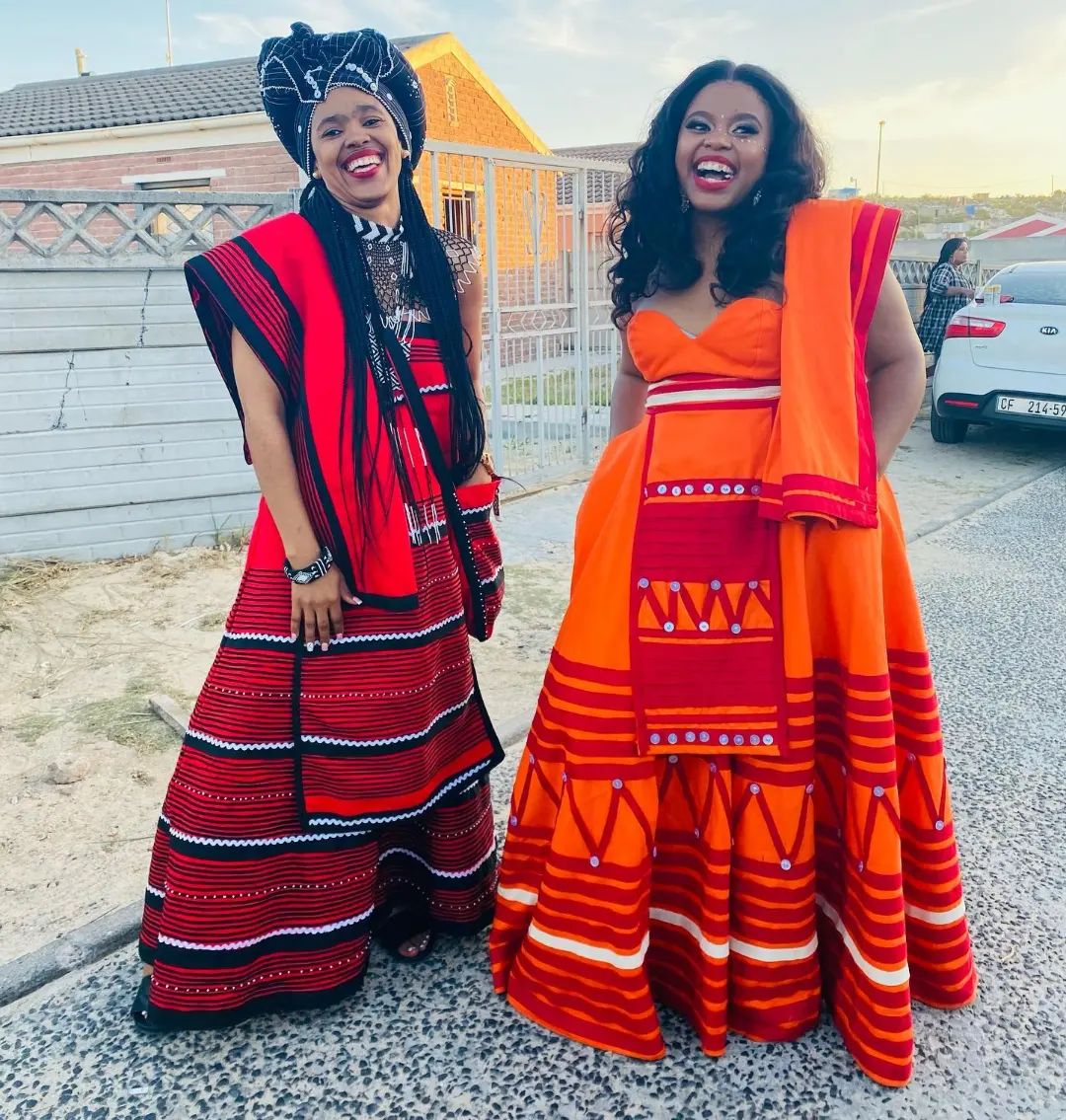
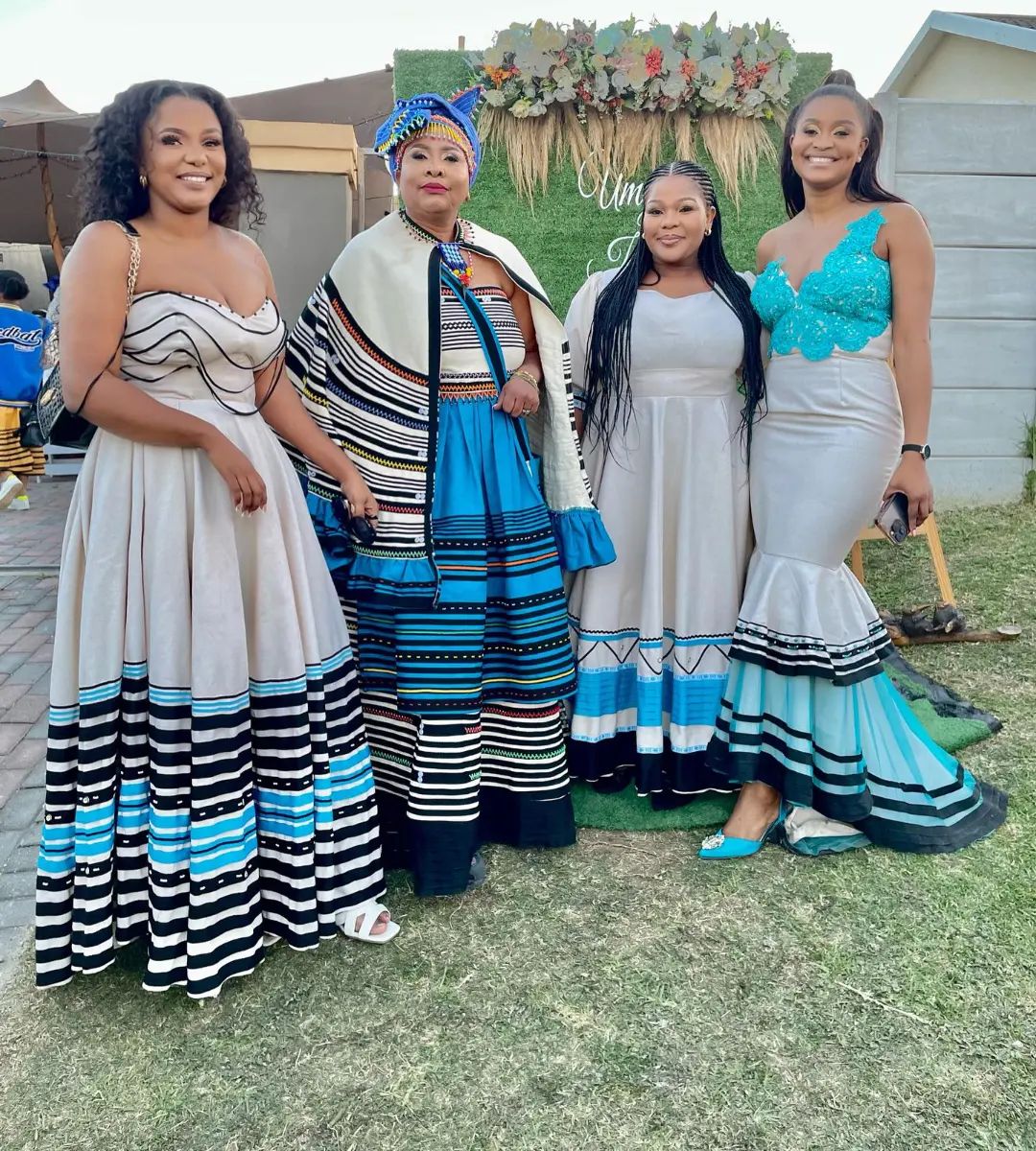
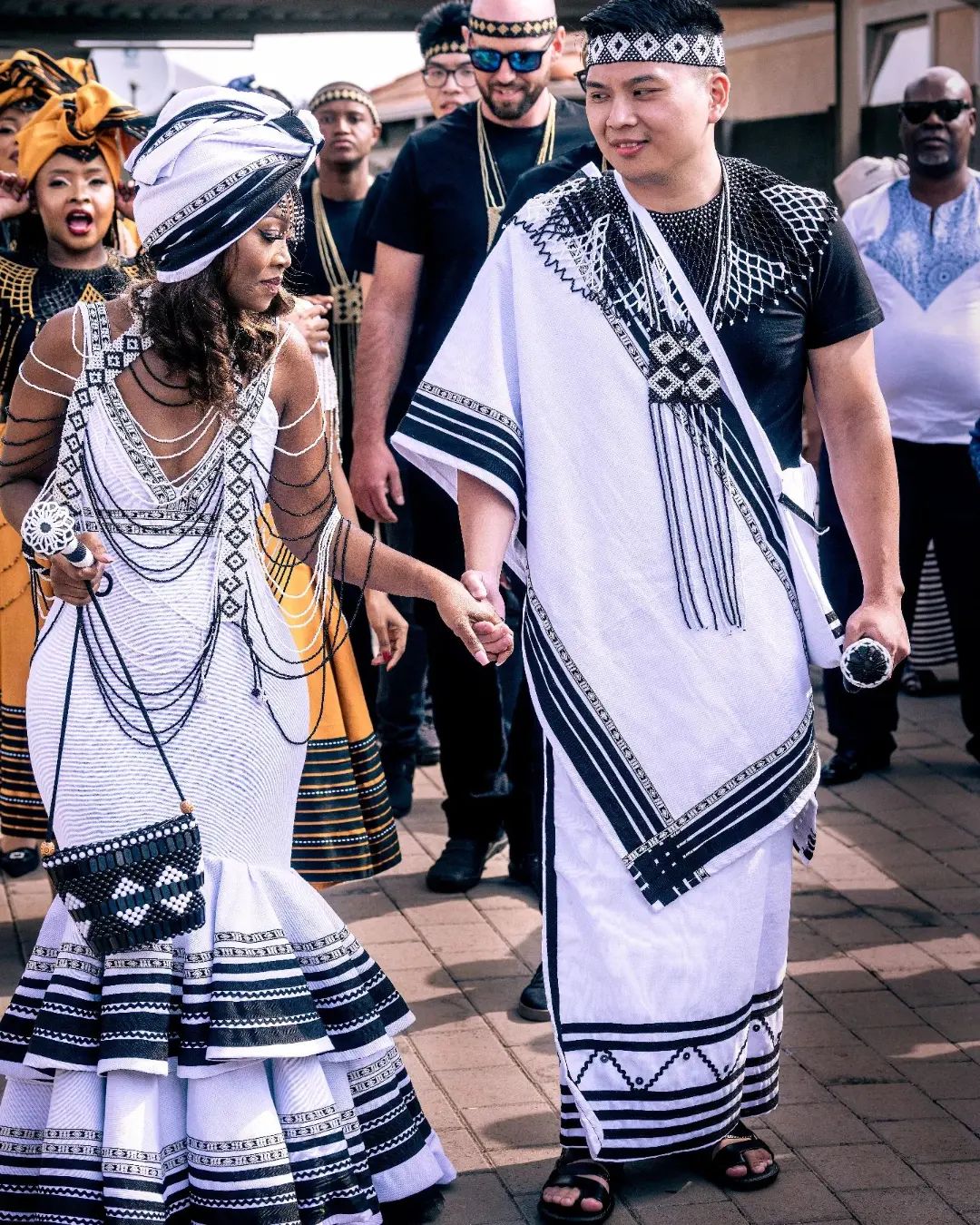
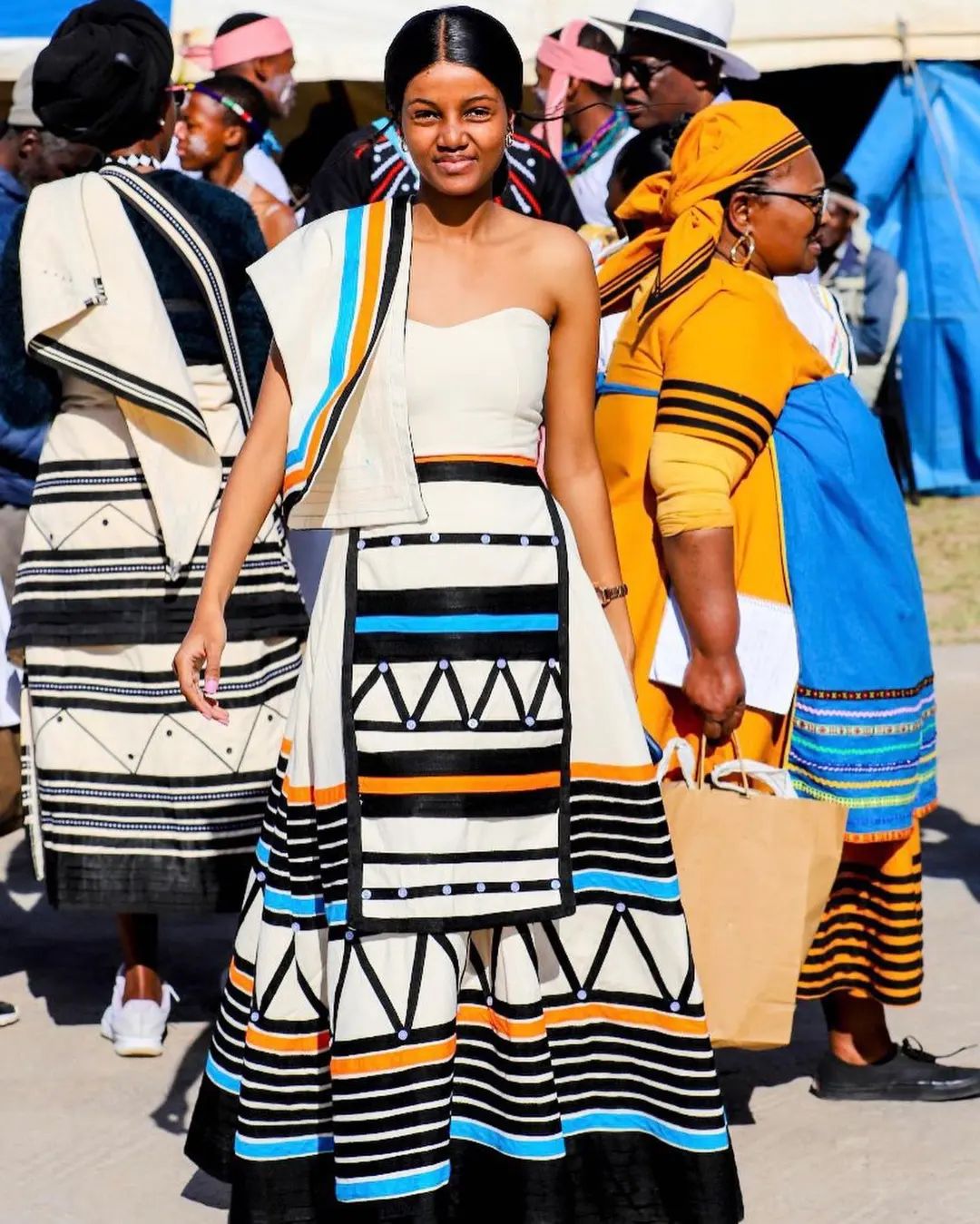
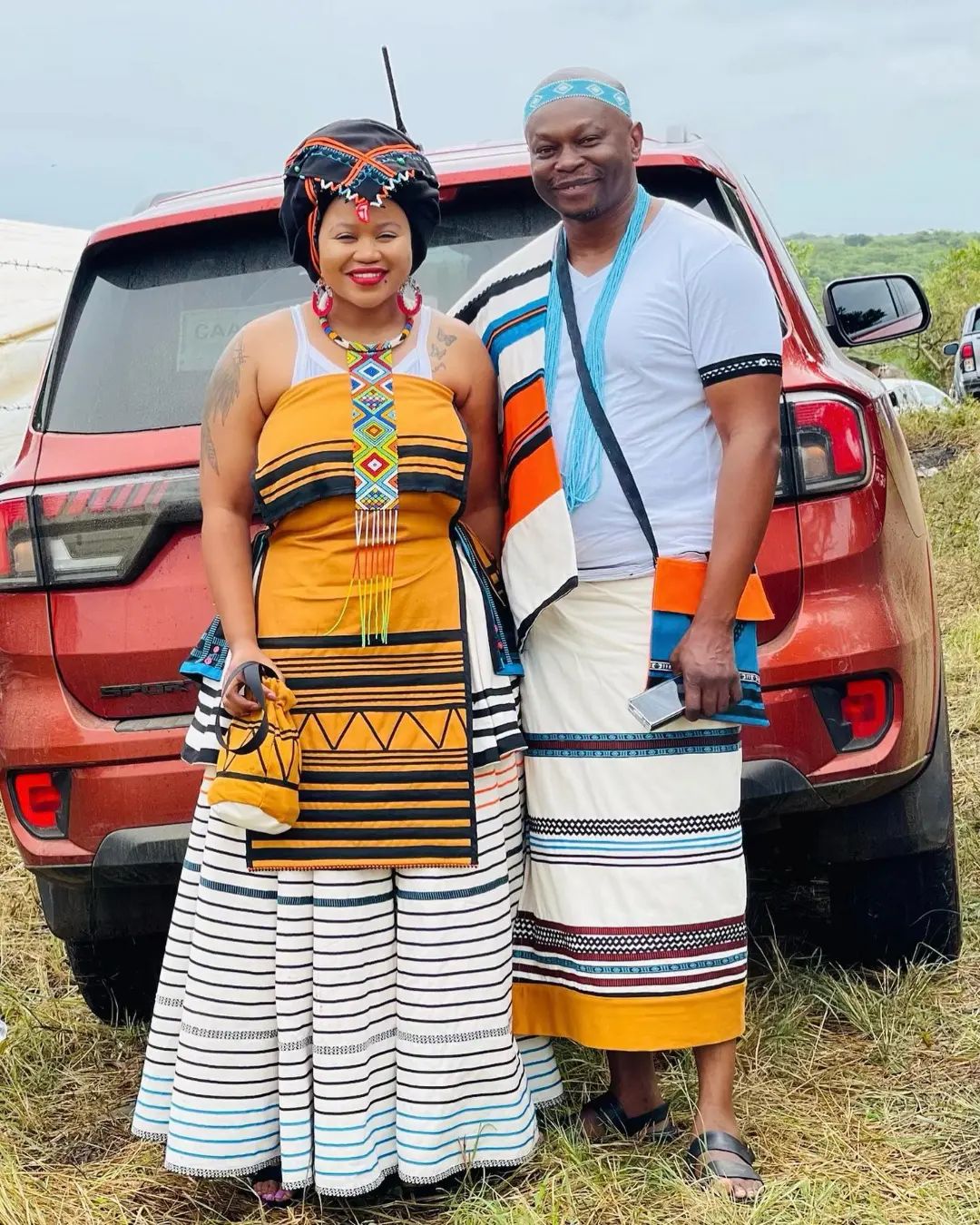
Here’s a comparison table to highlight the features of Shweshwe and Xhosa Beadwork in Xhosa traditional dresses:
| Fabric | Shweshwe | Xhosa Beadwork |
|---|---|---|
| Origin | Europe | Xhosa Culture |
| Material | Printed Cotton | Beads |
| Patterns | Geometric | Various |
| Colors | Vibrant | Customizable |
| Durability | Durable | Fragile |
| Wearability | Everyday Wear or Special Occasions | Special Occasions |
| Design Features | Intricate Pleats, Ruffles, Bold Silhouettes | Intricate Beadwork Designs |
| Symbolism | None | Love, Wealth, Cultural Identity |
These fabrics and beadwork are just some of the elements that make Xhosa traditional dresses for ladies so remarkable and cherished. Whether worn for cultural ceremonies, weddings, or simply as a fashion statement, they embody the beauty and pride of Xhosa culture. So, embrace the vibrant colors, bold patterns, and intricate details of Xhosa traditional dresses and experience the magic they bring.
Exploring Xhosa Traditional Dresses for Ladies
As a fashion enthusiast with a keen interest in cultural attire, I am always fascinated by the beauty and elegance of Xhosa traditional dresses for ladies. These dresses showcase the rich heritage and traditions of the Xhosa people, creating a stunning display of color and design. The intricate beadwork, vibrant prints, and unique silhouettes make Xhosa traditional dresses a true fashion statement. Let’s delve into the world of Xhosa traditional dresses and highlight some of their notable features.
Features and Details:
– Vibrant Prints: Xhosa traditional dresses are known for their bold and colorful prints, such as the iconic shweshwe fabric, which adds a touch of vibrancy and uniqueness.- Intricate Beadwork: The dresses are often adorned with intricate beadwork, showcasing the skilled craftsmanship of Xhosa artisans.- Unique Silhouettes: Xhosa traditional dresses come in various styles and silhouettes, from the elegant iRhamba to the regal uMbhaco, offering a range of choices to suit different occasions.- Head Wraps: A head wrap, known as the ibhayi, is an essential accessory that complements the Xhosa traditional dress, adding a cultural touch to the overall look.- Accessories: To complete the ensemble, Xhosa women often wear accessories like ndzilo, which are beaded necklaces that enhance the beauty of the dress.
To get a better understanding of Xhosa traditional dresses for ladies, you can visit Wikipedia for more information about the Xhosa culture and its influence on fashion.
Here’s a comparison table to help you appreciate the distinct features of Xhosa traditional dresses:
| Dress Style | Beadwork | Silhouette | Accessories | |
|---|---|---|---|---|
| iRhamba | Bold and Colorful | Intricate Designs | Flared, Flowing Skirt | Head Wrap (ibhayi) |
| uMbhaco | Vibrant Patterns | Beaded Details | Fitted Bodice, Full Skirt | Beaded Necklaces (ndzilo) |
With their striking designs, Xhosa traditional dresses provide a unique way to celebrate and embrace the Xhosa culture. Whether worn for traditional ceremonies, weddings, or cultural events, these dresses are a true representation of beauty and pride. So, why not consider adding a Xhosa traditional dress to your wardrobe and showcase the splendor of Xhosa fashion?
Influences on Xhosa Traditional Dresses
As a Xhosa woman, I have always admired the beauty and elegance of Xhosa traditional dresses. These dresses not only showcase our rich cultural heritage but also represent our sense of identity and pride. The Xhosa traditional dress, known as the “Ibhayi,” is influenced by various factors, including historical events, social status, and personal preferences.
One of the key features of the Xhosa traditional dress is the use of vibrant colors and intricate beadwork. The dresses are often made from colorful fabrics such as shweshwe or isiXhosa-printed cotton, with patterns that tell stories and convey messages. The beadwork, consisting of necklaces, bracelets, and headdresses, adds a touch of uniqueness and cultural significance to the ensemble.
The Xhosa traditional dress also incorporates traditional Xhosa accessories such as the “indwe” or ceremonial goatskin skirt, which is worn by married women during special occasions. The “umgaco” or beaded apron signifies a woman’s marital status and adds a regal touch to the outfit. These accessories, along with the headscarf or “doek,” complete the traditional Xhosa look.
Modern Adaptations of Xhosa Traditional Dresses
In recent years, Xhosa traditional dresses have experienced a modern twist, blending traditional elements with contemporary fashion trends. Many Xhosa women now opt for dresses that incorporate Western styles, such as off-the-shoulder designs or mermaid silhouettes, while still preserving the essence of the traditional Xhosa dress.
To facilitate comparisons, here’s a table outlining the features and details of Xhosa traditional dresses:
| Feature | Description |
|---|---|
| Fabric | Colorful fabrics like shweshwe or isiXhosa-printed cotton |
| Patterns | Vibrant patterns that tell stories and convey messages |
| Beadwork | Intricate beadwork on necklaces, bracelets, and headdresses |
| Accessories | “Indwe” goatskin skirt, “umgaco” beaded apron, headscarf |
| Modern Adaptations | Incorporation of Western styles while preserving tradition |
Xhosa traditional dresses are not just pieces of clothing; they are symbols of our heritage, diversity, and resilience as a Xhosa community. Whether we choose to embrace the traditional designs or incorporate modern influences, wearing Xhosa traditional dresses allows us to celebrate our culture and share its beauty with the world.
To learn more about Xhosa traditional dresses, you can visit the Xhosa people page on Wikipedia.
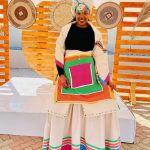



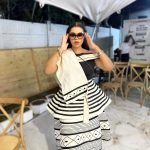

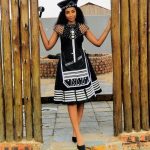
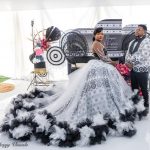

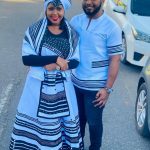
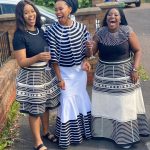
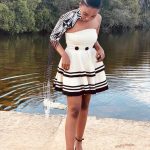
Comments are closed.